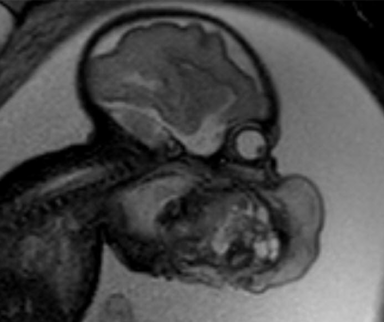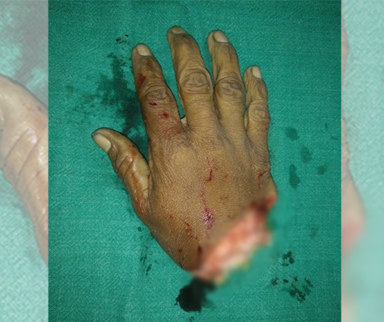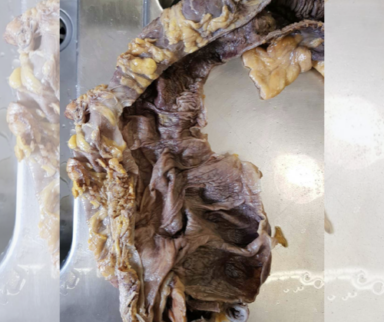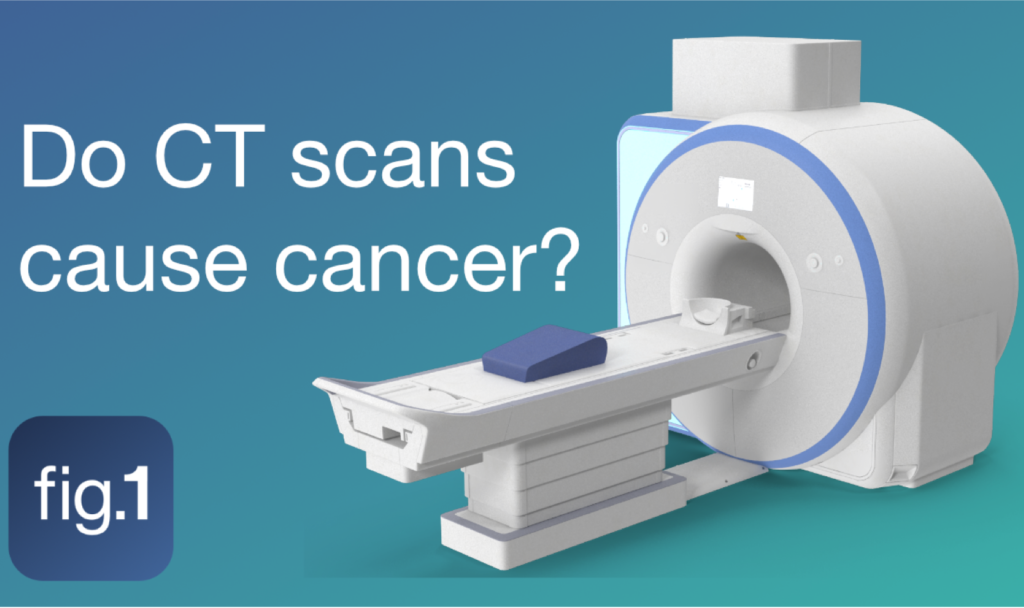
CT Scans and Cancer
This is an image of an abdominal computer tomography scan, or CT for short. These scans are a tool that have become increasingly popular over the years to diagnose a range of diseases. It’s essentially one or more X-ray machines strapped to a wheel that spins really fast.
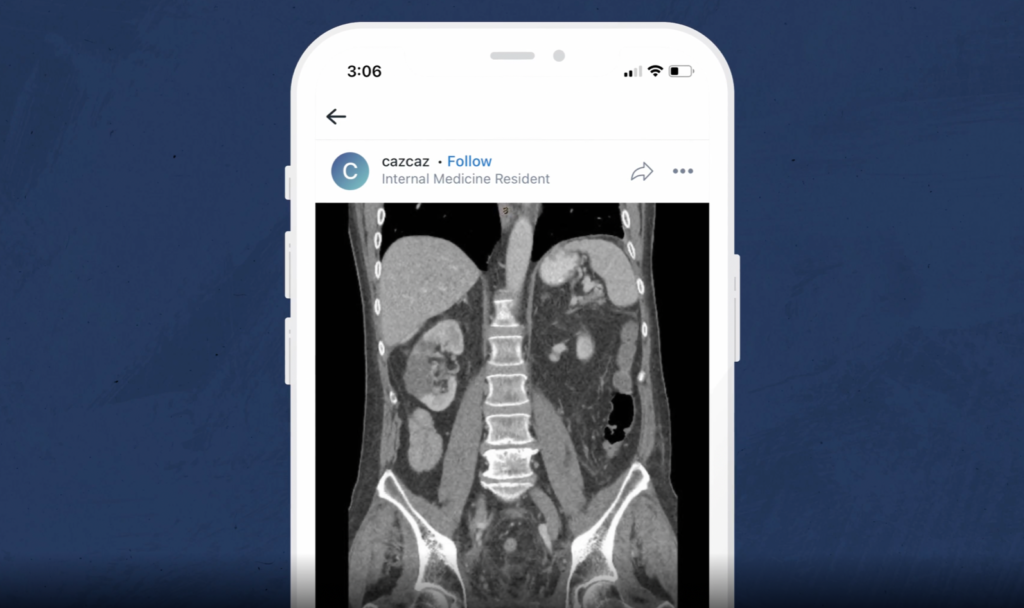
Recently, I came across a 2020 study that claims CT scans do not increase the likelihood of cancer. But in 2021, this study from the British Journal of Radiology says the opposite — that there likely is a link between CT scans and cancer, although the risk is pretty small. The study indicates about one excess cancer per 10,000 scans.
So, which paper is right? Well, you’ve probably guessed what I’m going to say next. It’s complicated.
When Does Radiation Exposure Become Harmful?
A quick note on radiation doses before we go any further. Low dose radiation is defined as the radiation dose that is almost certainly harmless, which is 100 mSv.
I can hear you asking, “But 100 mSv over what time frame?” And that question itself is complicated, controversial, and out of the scope of this blog post. But to quickly recap, there’s one theory that humans are harmed by radiation after specific events where they are exposed to radiation over a specific threshold. Radiation under that threshold is harmless.
There’s another theory where there is no threshold, and radiation exposure accumulates randomly over time. The more radiation you’re exposed to over time, the more likely you’ll get cancer. If you’re interested in diving deeper into this topic, this theory is called the linear no-threshold model, and is really controversial.
But for our specific discussion here, differentiating between these theories isn’t really important.
What Does the Science Say?
Let’s take a look at the 2020 study. After a big literature review looking at people who were exposed to less than 200 mSv of radiation, double the amount that is deemed harmless, the researchers picked the highest quality studies they could find on the topic of “does low-dose radiation cause cancer?” and put the results together. I have a few thoughts about them.
First, most of these studies are not looking at computer tomography scans. They’re looking at atomic bomb survivors, people who work around nuclear materials, or something else entirely. These are not the same conditions as a CT scan. In a CT scan, patients don’t, or at least shouldn’t be getting full body scans. Only a specific part of the body is exposed to radiation.
But in other studies, the participant’s whole body is being exposed. This matters a lot. The dose of radiation you receive is related to how much of your body is exposed, and what part of your body is exposed. Organs like the thyroid gland or gonads are more sensitive to radiation exposure than other cells. So if someone’s thyroid was exposed to radiation at a nuclear plant, they would have a very different relative radiation dose than someone getting a scan of their foot.
Here’s another issue. The type of radiation is also different. A person standing close to an atomic blast is being hit with neutrons, gamma rays, alpha particles, electrons, and thermal radiation which vary in quantity depending on the type of nuclear bomb going off. A person undergoing a computer tomography scan is getting X-rays.
I’ll admit the specific distinction between this radiation and how they affect the human body is way beyond my understanding. But my point here is, this isn’t an apples to apples comparison, so why are we using them in a study about CT scans?
A third issue I have is we’re not controlling for confounding variables in the population. For example, children are 10 times more sensitive to radiation exposure than adults, yet these studies include a mix of both adults and children. Children assigned female at birth may be even more radiosensitive than children assigned male at birth.
People who work with radioactive materials for their job are not representative of the general population’s radiation exposure. All of this, and, it’s not clear to me these studies are consistently controlling for people’s previous health history. How many of these people were already predisposed to developing cancer?
All in all, only a few of these studies focus on our actual question — do CT scans increase your risk of cancer?
Now, in comparison, that 2021 study by the British Journal of Radiology focuses only on studies looking at risk of cancer from CT scans, and mostly focuses on studies that involve children.
This brings up yet another problem I have with the 2020 study; the large variations in follow-up length. If we look at the studies that specifically focus on computer tomography scans, we’ll see that they have a follow-up length between 10 to 23 years, and they’re all for pediatric populations.
So for most of these studies, if a child was 17 when they got their CT scan, they’d be in their early 30s when the study concluded. Cancer in your 30s and below is pretty rare. It’s not that these studies are badly designed, it’s just that so far, we don’t know if having a scan increases the risk of getting cancer during the period of time in life when people are more likely to get cancer, in their 50s or later.
This issue isn’t unique to the 2020 study. The 2021 study has the same problem. Most of the studies they used are with children, and the average follow-up time is between 4 to 20 years after exposure. Again, cancer is rare in patients in their 30s and 40s. So, with all of these issues, can we really come to a sound conclusion?
Variability
Let’s say, for the sake of argument, we can solve all these problems. We are able to design studies that look at specific populations undergoing CT scans of the same body part, and then we follow up with them over a long period of time. The question, do CT scans actually increase your risk of cancer, is still hard to answer. There’s just a ton of variability. Let me explain.
Every computer tomography scan is different. The radiologists and technicians conducting the scan regularly make decisions that impact the dose of radiation received. If the radiologist wants a clearer image, or a wider scan area, more images are needed, the patient is exposed to more radiation. On the other hand, maybe the radiology team prioritizes achieving scans with the lowest effective dose. Those patients would be exposed to less radiation.
But it’s not just the radiologists at the helm that add variability to a patient’s radiation exposure, it’s the scanner themselves. Older scanners typically use more radiation than newer scanners. A chest CT scan on a new machine 20 years ago would have released more radiation than a new machine today. And don’t forget, these machines are designed to work for decades. So, that CT scanner from 20 years ago may still be in use today at one hospital, and then a hospital down the road may have a new, lower-dose scanner.
This 2008 study, as well as this 2015 study, both looked at CT scan doses in adults. An abdominal scan can be as low as 3.5 mSv, or as high as 26 mSv, with the 25th percentile of patients receiving 11 mSv or less, and the 75th percentile of patients receiving 26 mSv or more.
So, one abdominal computer tomography scan could be as low as 1/25th or as high as 1/4 of the safe 100 mSv radiation dose. And remember, people who are sick may get multiple CT scans during their illness, and those can add up fast. But this all assumes the linear no-threshold model is correct, which it might not be! And if it’s not correct, maybe none of this matters.
Do CT Scans Increase the Risk of Cancer?
So, what’s the takeaway here? Well to start, I don’t have much confidence in the 2020 study. I don’t think the methodology was as strong as it could have been, and that likely impacted their results. But I also think it’s fair to say that we don’t really know yet if computer tomography scans increase the risk of cancer.
If they do cause cancer, the absolute risks appear to be low. Certainly, if you’re told you need a CT scan and an alternative imaging technique isn’t an option, the benefits of having one done greatly outweigh the risks. But I think it’s also reasonable to be as conservative as possible.
While the total number of CT scans continues to go up for adults in North America, rates in pediatrics are dropping. Building strong institutional guidelines on when CT scans are appropriate to use will help ensure they are used only when they need to be, at least until we have more definitive research results.
The good news is more research is coming. There’s a number of big studies looking at this very question that will be released in the next couple of years. Maybe we’ll have more definitive answers then.

By Kyle Slinn, RN, BScN, MEd
Registered Nurse
Published November 7, 2022
Join the Conversation
Sign up for Figure 1 and be part of a global community of healthcare professionals gaining medical knowledge, securely sharing real patient cases, and improving outcomes.
